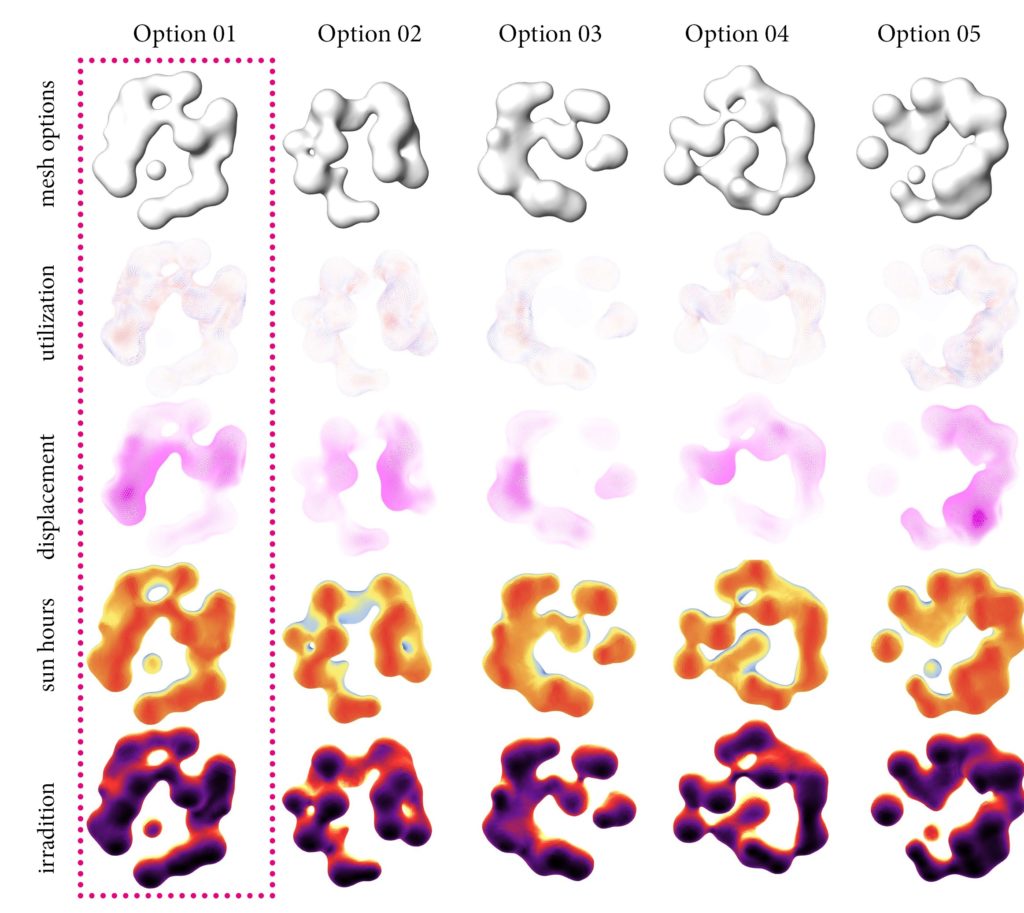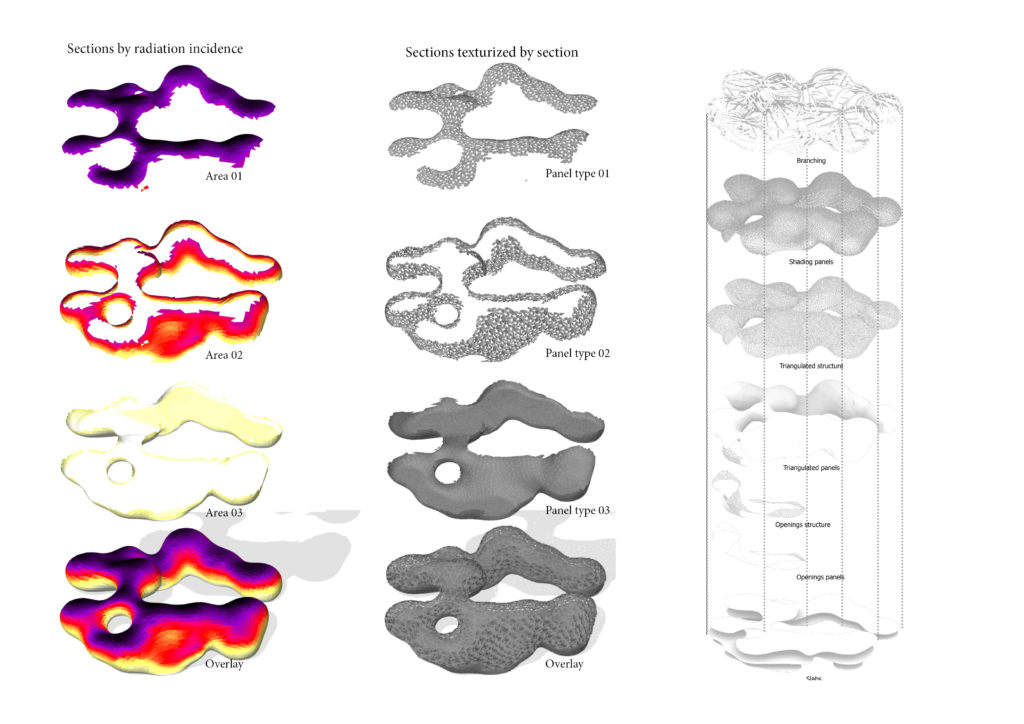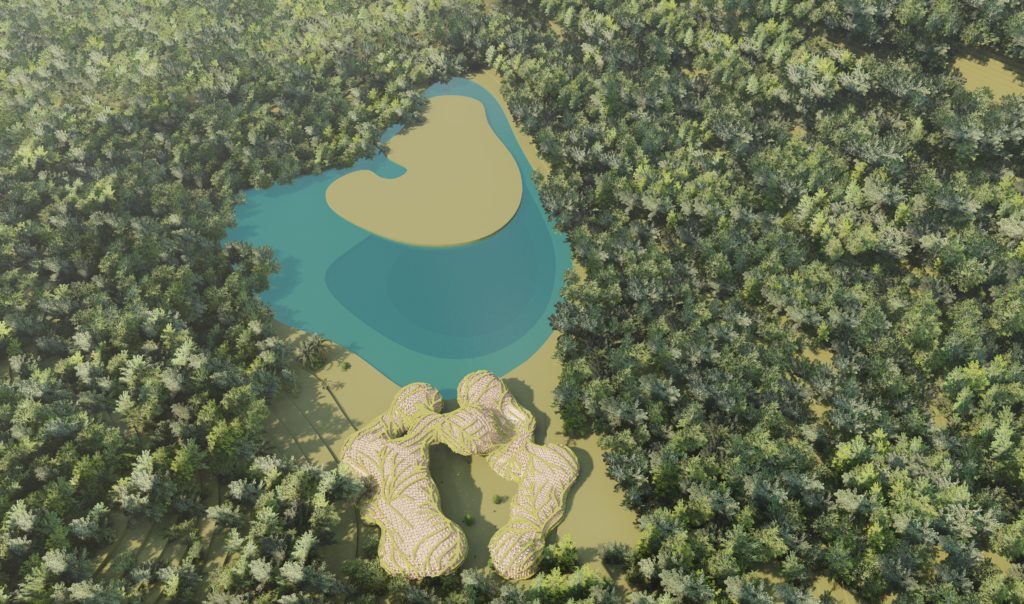
Data driven design is a concept that depicts the act of relaying in compiled data to resolve design issues, when data applied to design perspective is a sum of quantitative and qualitative resolutions related to project requirements. That resolution relies heavily on ability of interpretation, decision making and critical thinking of each professional.
The case study below is an exemplification of this approach used as the key feature a projects conceptual stage, aiming to have an expo building to host a conservation museum to raise awareness about wild animal species extinction under the precedent of integration between natural and architectural elements. The project is inserted at Pozzuoli, located by Italian coastline under subtropical temperate climate influence.

Given the general constraints, such as architectural inputs, climatic and site data; the studies geometrical studies took place targeting a holistic integration of design and landscape, as well as the definition of a workflow comprising the different aspects and needs possible in this context. The statement of a workflow in relation to data acquirements in early stages of projects leads to a iterative loop of solutions which reflects directly into performance.
Particle simulation was implemented a design tool to be applied as initial geometrical operation based in controlled collision rooted on scattering, implicating in multiple iteration of results based in multiple input vectors. A fast conceptual formality allows a preliminary multi-factorial exploration and analysis validating conventions and establishing a common quantitative ground for informed solutions. Multiplicity of iterations means depth of exploration and feasibility towards an optimized performance.

Results were established focused in primary assessment in crossed reference with architectural intentions, which will became more evident in further processes. The chosen object of study was submitted to a mesh manipulation process generating a unconventional shape characterized by smooth transition, self-shading typology allied with a concentrated radiation incidence pattern
These specifications attributes draw directions to architectural decisions in concern to optimal apertures, thermal transmittance, and thermal mitigation factors next to structural stability over the volume. The results of radiation analysis allowed data manipulation towards a filtration of areas in 3 categories: high, medium and low incident radiation, facilitating implementation and optimization panels according to its recommended functionality, enabling production of energy in concentrated areas. Balance of structural analysis was taken into account, where the option one had a better quantitative performance against the qualitative requirements

displacement (10.2cm) / 8 hours of sun in average /radiation in concentrated areas
A rationalized design process allied to a rationalized material choice must be considered in alignment with its surrounding and social insertion to produce a sensible individual. Architectural tools and methodologies were thought and studied to serve human needs in synchronicity with social impact, despite its artistic potential.




